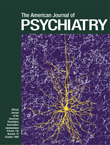This book is the outcome of a conference held in 1994 on Culture and Psychiatric Diagnosis, sponsored by the National Institute of Mental Health (NIMH) and APA. At the core of this conference was the intention to enhance the cultural validity of DSM-IV. Attending this conference primarily were members of the NIMH Culture and Diagnosis Group and members of the DSM-IV Task Force and work groups.
The main objective of this book with respect to DSM-IV is to provide psychiatric practitioners with a good cultural framework from which they can better understand the clinical manifestations presented by their psychiatric patients. During the preparation of DSM-III-R, a group of psychiatrists with expertise on cross-cultural issues, including myself, provided advice and recommendations for certain psychiatric diagnostic categories. Therefore, the opportunity to expand on the much-needed cultural sensitivity in DSM-IV was an excellent idea. The time was also very relevant because the United States is rapidly becoming a pluralistic society.
This book consists of a foreword, an introduction, and 11 sections. In the foreword, Leon Eisenberg delineates the importance of culture in diagnosing psychiatric disorders. In the introduction the editors address the conceptualization and foundation of this book. Section 1 comprises six chapters focusing on general issues related to the cultural and historical foundations of psychiatric diagnosis, nosological perspectives, the relevance of culture for DSM-IV, and specific issues pertaining to African Americans, Native Americans, Asian Americans, and Hispanic Americans. Section 2 comprises four chapters focusing on organic and psychotic disorders. Section 3 has three chapters on substance-related disorders. Section 4 has four chapters on mood and anxiety disorders. Section 5 has four chapters on somatoform and dissociative disorders. Section 6 has four chapters on eating and sexual disorders. Section 7 has four chapters on adjustment disorders. Section 8 has four chapters on personality disorders. Section 9 has four chapters on childhood-onset disorders. Section 10 has four chapters on culture-bound syndromes. Finally, section 11 contains five chapters addressing multiaxial issues. All of the chapters were written by respected experts in their field of expertise.
Missing in this book, in my opinion, are two chapters. One would offer a constructive, historical review of the evolution of the Diagnostic and Statistical Manuals before DSM-IV, with focus on key trends in the profession with respect to cultural aspects of diagnosis and treatment. The other would address constructively how future DSMs will deal with pluralistic societies. An additional weakness in this book is that, occasionally, too much unnecessary time is spent in criticizing DSM-IV rather than taking the full opportunity not only to enhance the much-needed cultural validity of DSM-IV and to fully develop culturally driven strategies for DSM-V.
In summary, this book goes a long way to underline the close relationship that exists between culture and clinical conditions in psychiatry and, in so doing, makes an excellent contribution in patient care not only for the ethnic minority populations who reside in the United States but for all U.S. population groups.

